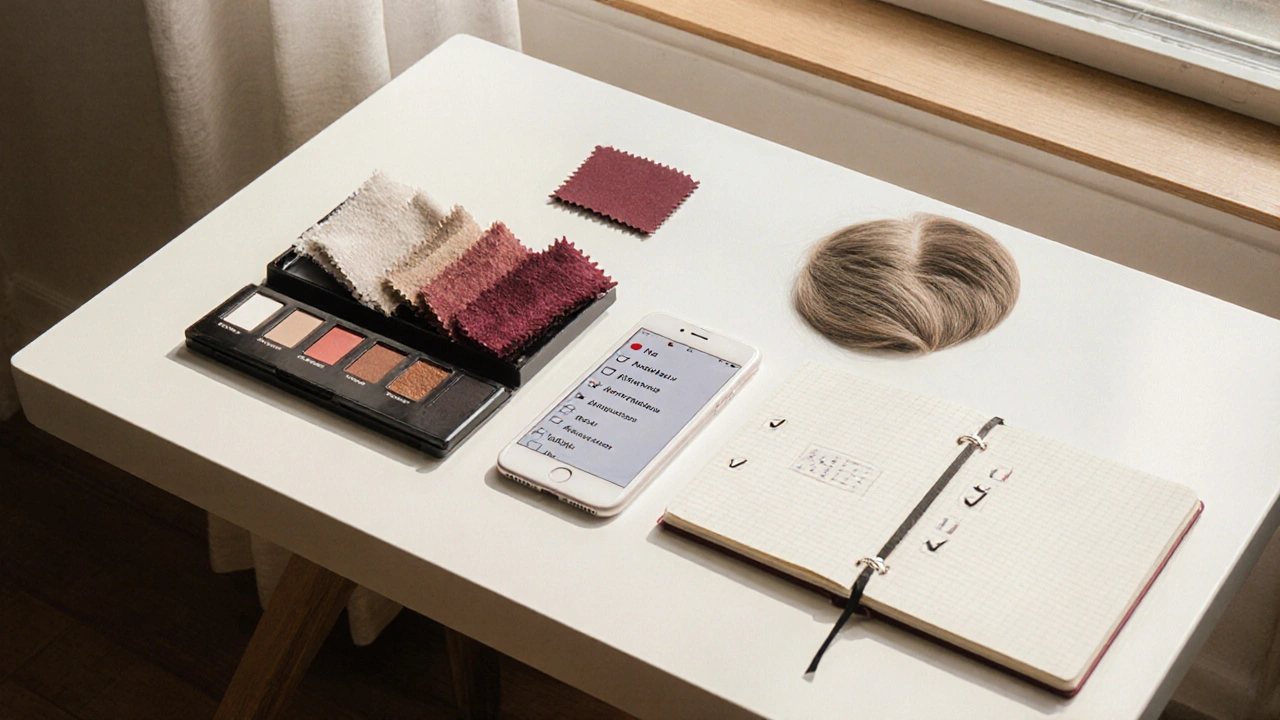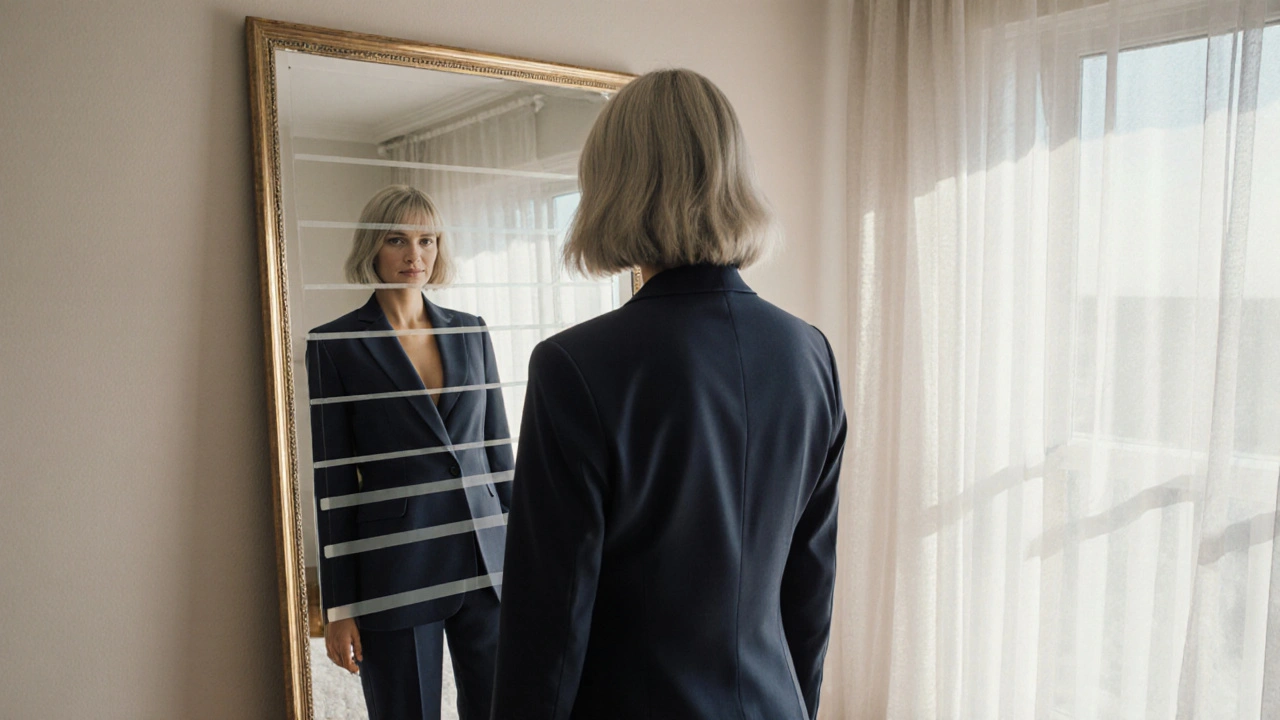Hair 10 Times Rule Calculator
How It Works
Enter your outfit's dominant color and saturation level. This tool calculates the ideal hair color saturation (approximately 10% of your outfit's saturation).
Recommended Hair Color
Why this works: Hair at 10% saturation creates visual harmony by making the outfit the focal point while adding subtle contrast.
Remember: Match undertones (warm/warm or cool/cool) for best results. Test in natural light before finalizing.
Key Takeaways
- The Hair 10 Times Rule suggests matching your hair shade to roughly one‑tenth of your outfit’s color intensity.
- It helps create a balanced look without overwhelming the eye.
- Calculate the rule by using a simple visual test or a color‑picker app.
- Apply the rule across seasons, textures, and occasions for consistent style.
- A quick checklist at the end can save you from common mismatches.
Ever stared at your mirror and wondered why a bold outfit feels "off" with your hair? You’re not alone. The Hair 10 Times Rule is a quick visual guideline that helps you balance hair color and clothing tones so the overall look feels harmonious. In plain English, the rule says the intensity of your hair color should be about one‑tenth of the dominant hue in your outfit. The result? A look that feels intentional, stylish, and easy on the eyes.
Below we’ll unpack what the rule really means, how to apply it with everyday wardrobe pieces, and why it works from a color‑theory perspective.
Understanding the Hair 10 Times Rule
At its core, the rule is about proportion. Imagine your outfit as a painting. The main colors dominate the canvas, while smaller accents provide depth. Your hair, sitting right next to your face, acts as a subtle accent. By keeping its saturation and value lower-roughly one‑tenth of the outfit’s dominant hue-you avoid a clash that can make the ensemble look chaotic.
Why ten? The number isn’t a hard science; it’s a rule of thumb that most people find works visually. It’s similar to the "10% rule" photographers use for color grading: a small amount of contrast dramatically improves a photo. In styling, a tiny reduction in hair intensity lets the outfit shine while still feeling cohesive.
How to Calculate the Rule in Real Life
- Identify the dominant color of your outfit. This could be the color of your dress, blazer, or the most prominent piece.
- Estimate its saturation level-how vivid or muted it feels. A bright red scarf rates high on saturation; a soft beige sweater rates low.
- Choose a hair shade whose saturation is roughly one‑tenth of that number. If your outfit is extremely bold (e.g., electric blue), a very light ash blonde works well. If you’re wearing muted earth tones, a richer brown or deep black can serve as the accent.
- Test the combo under natural light. Natural light reveals true colors better than indoor bulbs.
Apps like Adobe Color or Pantone Studio let you extract exact HEX values and compare them, making the math easier if you’re a data‑driven dresser.
Why the Rule Works: A Peek at Color Theory
Color theory explains how humans perceive harmony. The value (lightness vs. darkness) and saturation (intensity) are two axes that dictate visual balance. When your hair sits at a lower saturation level, it doesn’t compete with the outfit’s dominant hue, allowing the outfit to remain the focal point.
In practice, this follows the principle of visual hierarchy. Your face is already a focal point; adding a muted hair tone keeps the hierarchy intact-face, outfit, then hair as a subtle supporting player.

Practical Outfit Ideas Using the Rule
Below are three everyday scenarios that illustrate the rule in action.
- Office Power Look: Navy tailored suit (high saturation) paired with a light ash‑blonde bob. The hair’s muted ash tone keeps the outfit’s authority intact.
- Weekend Casual: Olive utility jacket with a cream tee (mid‑saturation). A chestnut brown haircut adds warmth without overpowering the earth tones.
- Night Out: Emerald green silk dress (very vivid). Opt for a platinum or silver‑gray balayage-almost white-to let the dress dominate the visual field.
Notice how each hair shade is considerably less saturated than the outfit’s main color, matching the 10‑times guideline.
Common Pitfalls and How to Avoid Them
Even with the rule, mistakes happen. Here are three frequent errors and quick fixes.
- Over‑matching. Choosing a hair color that mirrors the outfit exactly can create a “monochrome overload.” Instead, step down the saturation by one to two levels.
- Ignoring undertones. A warm caramel hair on a cool teal dress feels off. Match undertones (warm‑warm or cool‑cool) while still respecting the 10‑times ratio.
- Forgetting lighting. Evening indoor lighting can mute colors, making a seemingly balanced combo look dull. Test your outfit in daylight before finalizing.
Pro Tips: Tweaking the Rule for Different Scenarios
- Seasonal Adjustments: In winter, people gravitate toward deeper, cooler palettes. Pair a dark burgundy coat with a soft ash‑brown hair for a subtle contrast that respects the rule.
- Texture Contrast: If you’re rocking glossy hair, consider a matte fabric to keep visual weight balanced.
- Accessory Boost: When you want to accentuate hair, use accessories (headbands, clips) that echo the hair’s hue, allowing the outfit to stay the star.

Comparison: Hair 10 Times Rule vs. Traditional “Hair‑to‑Outfit Matching”
| Aspect | Hair 10 Times Rule | Traditional Matching |
|---|---|---|
| Focus | Proportion of saturation | Exact color match |
| Flexibility | High - works across bold & muted palettes | Low - can look forced with bright outfits |
| Complexity | Simple visual test | Requires precise color analysis |
| Best for | Everyday styling, quick decisions | Fashion shoots, curated editorials |
Quick Checklist Before You Step Out
- Identify the dominant outfit color.
- Determine its saturation level (high, medium, low).
- Choose a hair shade whose saturation is about 10% of that level.
- Confirm undertone compatibility (warm vs. cool).
- Test the combo in natural light.
- Adjust accessories to complement, not dominate.
Mini FAQ
Can the Hair 10 Times Rule work with dyed highlights?
Yes. Treat the overall hair color (base + highlights) as the visual whole and keep its combined saturation within the 10% range. If highlights add too much brightness, tone them down with a low‑saturation base.
What if my outfit has multiple colors?
Pick the most dominant shade-usually the piece that covers the largest area (like a coat or dress). Apply the rule to that hue; secondary colors can be ignored for the hair decision.
Does hair texture affect the rule?
Texture influences visual weight. If you have very thick, curly hair, you might want a slightly lower saturation (closer to 8% rather than 10%) to keep the look balanced.
Is the rule suitable for formal events?
Definitely. Formal wear often uses deep, saturated colors. A muted hair tint (e.g., soft ash or cool brown) honors the rule and keeps the outfit the star.
How often should I reassess my hair color relative to my wardrobe?
Whenever you refresh a major wardrobe piece-like getting a new coat or changing seasonal palettes-run through the checklist again. A quick visual test takes under a minute.
By treating the hair 10 times rule as a quick visual gauge, you can streamline daily styling decisions, avoid clashing colors, and look polished with minimal effort. Give it a try next time you pick an outfit, and notice how the subtle hair accent lets your clothes truly shine.


Write a comment